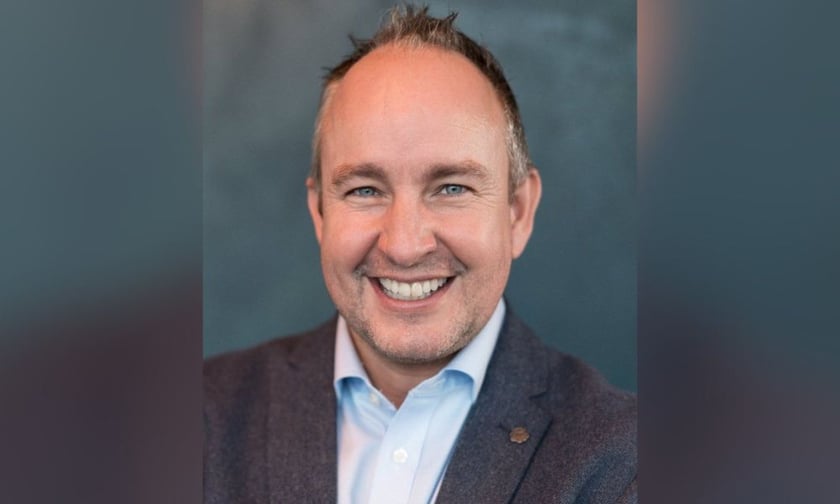

Geocoding is rapidly becoming a critical tool for the insurance industry, enabling more precise risk assessment by pinpointing the exact location of insured properties. As insurers move beyond postcode-based assessments, geocoding allows for property-level analysis, offering deeper insights into geographic risks such as flooding and wildfires.
With growing adoption driven by climate change and the need for more accurate data, geocoding is reshaping how insurers manage risk.
In a recent conversation with Insurance Business, Mark Varley (pictured), founder and CEO of Addresscloud, highlighted how he established the company in 2015 after working for nearly 20 years in the insurance industry.
His focus on geographic risk began during a significant project with RSA Insurance Group, where he was part of the team integrating geographic data into the underwriting process.
"RSA wanted to bring geography and geographic risk to the point of underwriting," said Varley. "They were one of the first companies in the UK to do that, especially in the residential, retail, and commercial space."
According to Varley, the use of geographic map data during underwriting was groundbreaking at the time.
“Before that, most companies in the UK were relying on postcodes to assess risk. But RSA moved to property-level assessments, meaning that each individual property had its own risk profile,” he said. "You wouldn’t just lump together properties based on postcodes anymore – it was about getting granular, down to the property level."
This experience ignited Varley’s interest in the technology behind geographic risk.
"I found the technology fascinating – the idea that you could take a map, load it into a database, and then ask questions about it,” he said. “Even now, after 20 years, it still impresses me."
Varley defined geocoding as the process of converting an address into its exact location on a map. He likened it to what happens when someone uses Google Maps. "Geocoding is critical for risk analysis, especially in insurance. Whether you’re assessing peril risk, property attributes, or managing exposure, getting the exact location of a property is crucial," he said.
Varley likewise stressed the importance of precision in the insurance industry: "We need to know the exact rooftop of the building we’re insuring, not just the general area."
When Addresscloud launched, geocoding was its first service. "We created our own geocoding system from scratch for the UK and Ireland," Varley said. The company integrates data from sources like Ordnance Survey in the UK and Royal Mail, as well as Ordnance Survey Ireland and An Post in Ireland.
Addresscloud has also developed a custom address parser that uses fuzzy matching to clean up incomplete or erroneous data. "We’ve built a custom address parser to handle these situations," said Varley.
Addresscloud operates globally, although the accuracy of its geocoding varies depending on the data available in each country. In some places, like France, government geocoding data is freely available, making it easier to deliver accurate services.
"We provide global coverage through a network of partner APIs, and we’ve recently launched a service where we call third-party geocoding APIs in countries like France or Australia," Varley said.
Varley also touted that Addresscloud has mapped 2.4 billion building footprints worldwide, which helps improve the accuracy of its services, even in regions with less comprehensive data, like India.
The company has fully mapped flood and wildfire risks across mainland Europe, the US, and Canada. By the end of the year, Addresscloud plans to expand into Australia, New Zealand, and South Africa, with further expansion into Asia and South America next year.
“Client demand drives our expansion," said Varley. "We’re a small team, but if a client needs coverage in a specific country, we have the tools and data to move quickly."
Varley also addressed concerns about data privacy, stating that Addresscloud does not handle personal data. "We don’t deal with personal data," he said. "For example, we recently licensed US tax assessor data, which includes property attributes but also personal financial information. We strip out the personal data and focus solely on the property details."
He noted how Addresscloud works mainly with private companies, including insurers, banks, and utilities, and partners with commercial data providers like JBA for flood modeling and mapping. "There’s a growing network of private companies like ours working in this space, using technology to provide valuable risk analysis and mapping services," Varley said.
Looking ahead, Varley sees advancements in geocoding as governments open up more accurate data and as AI becomes more integrated into the process. "We’re working on training AI models to better understand and parse addresses, which will help improve geocoding accuracy," he said.
Geographic risk analysis is also expected to become more sophisticated, with the use of satellite imagery, sensor data, and detailed building footprints helping to assess risks such as flooding and wildfires.
On the broader issue of climate change, Varley believes insurers are well-equipped to handle increasing threats from natural disasters but that the industry is evolving.
"Most insurers are already using catastrophe models and simulations to assess risk," he said. However, he predicts more real-time data usage in the future. "I think we’ll start seeing more real-time data being used, with insurers running models earlier in the process, even before issuing quotes."
Varley also sees regulatory changes pushing insurers to take a longer-term view of climate risk. "While insurers are prepared for short-term risks, I think regulatory changes will push them to take a longer-term view of climate risk, similar to how lenders are already doing," he said.
What are your thoughts on this story? Please feel free to share your comments below.
